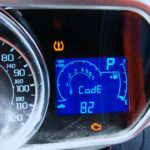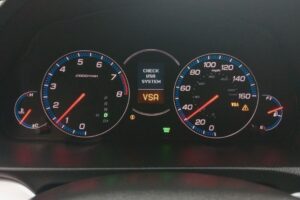If you look at all the different, almost countless, circuitous electrical wires in an automobile, you will be amazed at how the electricians connected them all. They use a particular system to avoid getting confused as they connect these electrical wirings. I will discuss this in this article – Chevy wiring color code.
Most electrical wiring companies recognize the Chevy wiring color code. This wiring code is not yet fully complete because Chevy is still changing things here and there. It also has varying color codes for certain car parts, such as the air conditioning or the power windows. The purpose of the Chevy color code is to use it as a basic guide for wiring cars.
Color coding wires is vital. Why? These wiring codes specify the function or purpose of every wire in a particular electrical circuit. The different colors of the electrical wires differentiate between the ground, the neutral, and the hot wires.
Read on to learn more about the Chevy wiring code, the different color codes used in automobile wiring, and its importance in the operation of a car.
Chevy Wiring Color Code
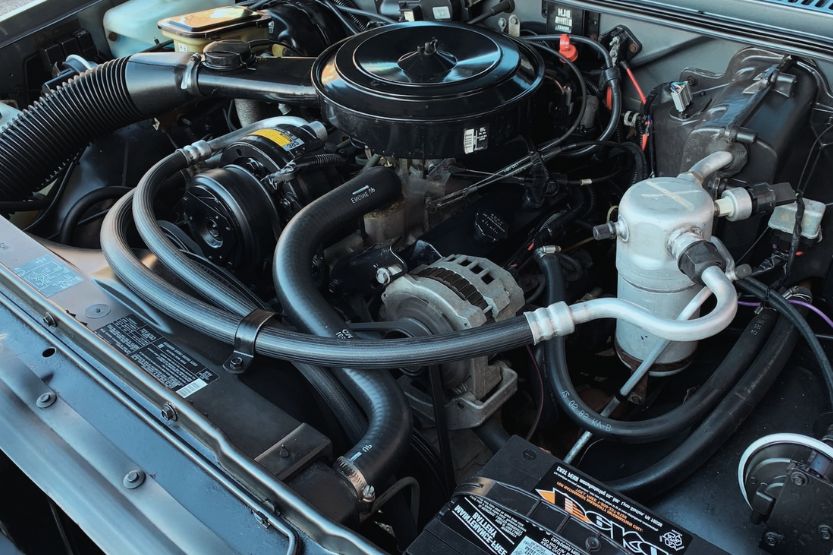
The color coding of electrical wires of an automobile is essential because it specifies the function or purpose of every wire in all electrical circuits. These colors distinguish the ground wires, the neutral wires, and the hot wires from each other.
Using different colors of electrical wires makes connecting scores of wires inside an automobile less confusing and systematically organized.
When an auto electrician is asked to troubleshoot a problematic electrical circuit, they use the Chevy wiring color coding to wade through the circuitous electrical wires and pinpoint the wires they have to fix or repair. That’s how important this color coding is.
So, if you understand the Chevy wiring color code, you won’t have much difficulty identifying what particular wiring is used for. It will help you to maintain consistency within a specific electrical circuit or system.
In addition, if you know this Chevrolet wire color code and use it, you won’t need to label all the wires when you need to wire your car. That will save you time and money because you only have to know and use specific colored wires to connect the electrical circuits.
Chevy Wiring Codes In Detail
Ultimately, it is from the car battery where all electrical devices in a vehicle get their electricity. Power from the battery goes to these electrical devices through the connected electrical wires. Every electrical device has an electric circuit.
Each electric circuit consists of several wires. Suppose there is no systematic way of organizing the wiring connections of all the electrical devices in a vehicle.
In that case, an electrician might get confused as to which wires they should focus on when doing car electrical repairs. This is the primary reason there is such a thing as Chevy wiring codes.
The following is a detailed enumeration of these wiring codes in each automobile’s electrical wiring system section.
On each code, the number represents the gauge or the size of the electrical wire, followed by the wire’s color. Then, the electrical device to which these wires are typically connected is also indicated:
Main Power Distribution
- 10 Red – alternator battery feed, ignition switch, fuse panel battery
- 12 Brown – accessory feed from the ignition switch to fuse panel
- 12 Pink – ignition feed from the ignition switch to fuse panel
- 12 Purple – start circuit from ignition to the “S” terminal on the starter solenoid
Ignition System
- 12 or 14 Pink – coil power; if you use the HEI, use 12 gauge and no ballast resistor; if you are using standard points, use the 14 gauge through a ballast resistor.
- 14 Yellow – bypass leg from starter “I” terminal to coil + (this applies maximum battery voltage to the coil during cranking only)
Dashboard Light Wiring
- 18 Dark Blue – right turn signal indicator, spliced off of right front T/S wire
- 18 Light Blue – left turn signal indicator, spliced off of left front T/S wire
- 18 Gray – interior illumination (typically powered off of tail light fuse)
- 18 Light Green – high beam indicator, spliced off of high beam circuit at the dimmer switch
- 16 Brown – generator lamp to “I” terminal on alternator or voltage regulator
Instrument Gauge Wiring
- 18 White – tachometer
- 18 Green – water temperature
- 18 Blue – oil pressure
- 18 Purple – vehicle speed sensor – to ground
- 18 Yellow – vehicle speed sensor – to the electric speedo
- 18 Pink – gauge power (which goes to the ignition terminal of all gauges and one side of the generator lamp). The voltmeter also uses this
- Pink, Tan, or Purple – fuel gauge (the color has changed many times)
Exterior Lamp Warning
- 14 Blue – headlight switch output into a center pin of dimmer switch
- 14 Green – battery feed from headlight switch fuse into the battery terminal of the headlight switch
- 14 Light Green – high beams
- 14 Tan – low beams
- 16 Light Green – reverse lamps
- 16 Brown – park fuse output to tail lights
- 16 Yellow – headlight switch park circuit output into park fuse
Turn Signal Switch Wiring
- 16 Yellow – left rear turn signal
- 16 Dark Blue – right front turn signal
- 16 Light Blue – left front turn signal
- 16 Green – right rear turn signal
- 16 Purple – turn signal flasher output into the turn signal
- 16 White – brake switch output into turn signal switch
- 16 Black – horn relay trigger (connected to ground)
- 16 Brown – hazard flasher output into the turn signal
Horn
- 14 Green – horn relay output to horn
Wipers
- 14 Dark Blue – wiper switch to wiper motor high speed
- 14 Light Blue – wiper switch to wiper motor low speed
- 14 Black – wiper switch to wiper motor washer pump
- 14 Yellow – wiper power input (typically, this is connected directly to the wiper motor)
Heater
- 12 Brown – heater switch power terminal
- Orange, Red, and Yellow are typically the colors used depending on the setup of the heater and the type of blower resistor. The color designations change from time to time.
Courtesy Light Wiring
- 16 White: Courtesy lights use a ground circuit. The wire is spliced off of the door jamb switches and sometimes the headlight switch, with half of the wires going to the courtesy lights.
Battery Powered Circuits (12 volts constant)
- 16 Orange: This color is used mainly for devices that are hot at all times, but also those which are switched, like the hazard flasher, the brake switch input, the trunk hood, glove box lights, and the courtesy light input.
These devices can function with the key off. However, they are not always on, so they use the Orange color. Cigarette lighter wire also uses this color.
Again, why do you need a Chevy wiring color code? You’ll need the Chevy wiring color code to know your car’s wiring. By using the code, you can wire your car without the need for labeled wires.
Chevy Wiring Code for a Chevy S-10 and Chevy Blazer
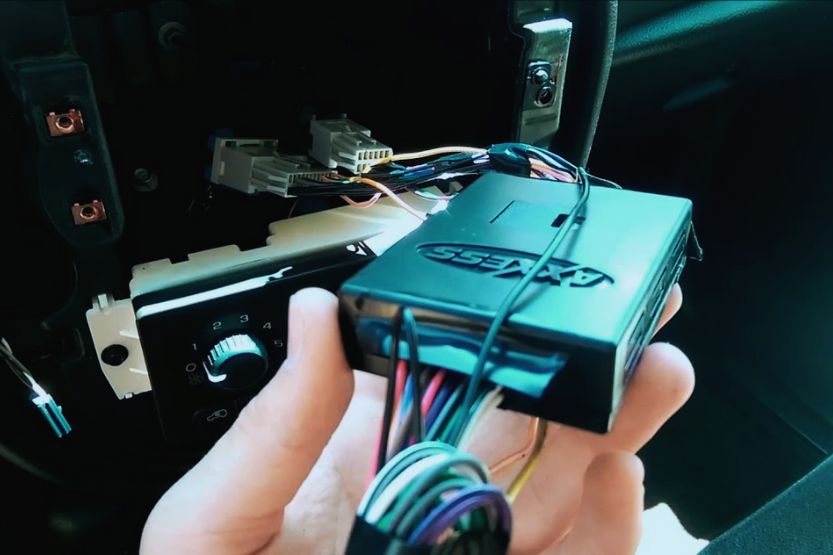
To give you real-world examples of how Chevy applies the Chevy wiring color code, below are the wiring codes of the Chevrolet S-10 and the Chevy Blazer of several model years:
1982 to 1993 Chevy S-10 and Chevy Blazer
- 12volts – red (there will be 2) + ignition harness
- Starter – yellow or purple + ignition harness
- Second Ignition – white + ignition harness
- Ignition – pink + ignition harness
- Accessory – orange + ignition harness
- Second Accessory – brown + ignition harness
- Door Trigger – white – pin or courtesy light
- Parking Lights – brown switch or rear harness
- Parking Brake – black – at the e-brake
- Brake Wire – white at brake pedal switch
- Horn Trigger – black – steering column
- Power Lock lt – blue drivers kick panel
- Power Unlock – black/white black/white drivers kick panel
- Tachometer – white AC coil on top of the engine
- Trunk/Hatch Release – black + relay under the left dash
1994 to 1997 Chevy S-10 and 1995 to 1997 Chevy Blazer
- 12volts – red (there will be 2)+ ignition harness
- Ignition – pink + ignition harness
- Starter – purple or yellow + ignition harness
- Second Ignition – white or pink/white + ignition harness
- Accessory – orange + ignition harness
- Lock Motor – gray drivers kick panel
- Unlock Motor – tan drivers kick panel
- Power Lock lt – Blue + either kick panel
- Power Unlock – white + either kick panel
- Tachometer – white AC ECM
- Brake Wire – white + at brake pedal switch
- Parking Lights+ – brown switch or rear harness
- Parking Brake – black at the pedal
- Trunk/Hatch Release – black/white + switch or keyless (Trunk/Hatch Pin tied in with doors
- Horn Trigger – black – steering column
- Door Trigger – white – keyless module (Dome Supervision uses door trigger)
Chevy S-10 or Blazer 1998 and Up
- 12volts – red + ignition harness
- Ignition – pink + ignition harness
- Starter – yellow + ignition harness
- Second Ignition – white + ignition harness
- Accessory – orange + ignition harness
- Lock Motor – gray 5wi driver kick panel
- Unlock Motor – tan 5wi driver kick panel
- Power Lock lt – blue + brown plug at BCM
- Power Unlock – white + brown plug at BCM
- Brake Wire – white + steering column
- Parking Brake – black – at the pedal
- Parking Lights+ – brown + light blue plug at BCM
- Parking Lights – white – light blue plug at BCM
- Tachometer – white ac PCM
- Horn Trigger – black – steering column
- Trunk/Hatch Pin – pink/black – light blue plug at BCM
- Trunk/Hatch Release – black – purple plug at BCM
- Door Trigger – BCM (Dome Supervision use door trigger)
Audio Related Wirings
- Radio 12v – orange
- Radio Ignition – yellow
- Radio Ground – black
- Radio Illumination – brown
- Dimmer – gray
- Right Front Speaker +/- – light green to dark green
- LF Speaker +/- – tan to gray
- RR Speaker +/- – dark blue to light blue
- LR Speaker +/- – brown to yellow
- Power Antenna – pink (for other GM vehicles but not with the Chevy S-10)
Automobile Wiring Colors 101
Contrary to popular belief, automobile electrical wiring has no standard wiring colors. The specific wire color depends on the make, model, and year of the particular vehicle being considered.
For example, if you want to know the appropriate Chevy tail light wire colors to use, you need to know the basics of how to read electrical diagrams of cars:
1. Electrical Symbols
There are four symbols in a typical electrical diagram. They represent four elements of the electric circuit:
- Battery,
- Switch,
- Resistor, and
- Ground.
The diagram may have additional symbols for the case ground and the variable battery.
In advanced electrical diagrams, additional symbols will represent the circuit path and the amp. All these symbols are universal. Having a copy or memorizing them is the best way to ensure you get the right information.
2. Color Symbols
Another way electrical diagrams can designate the wire color using two-letter codes. In these codes, the first letter represents the main color of the wire. The second letter stands for wire stripping. For instance, if a wire is marked GR, that would mean it is green colored with a red stripe.
3. ORN Symbols
Most electrical circuit diagrams, such as in-vehicle electrical systems, are more complicated than basic electrical diagrams. Most of them are advanced electrical diagrams.
In such diagrams, one symbol can designate the size and color of a particular electrical wire. This symbol is called the ORN. When you see a wire’s ORN, it will inform you about the color of the wire that you should use.
ORN codes are typically printed along with the complete spelling of the color for colors that only have four or fewer letters, like BLUE. But in cases of colors with five letters, such as black, the ORN symbol will be BLCK.
Frequently Asked Questions
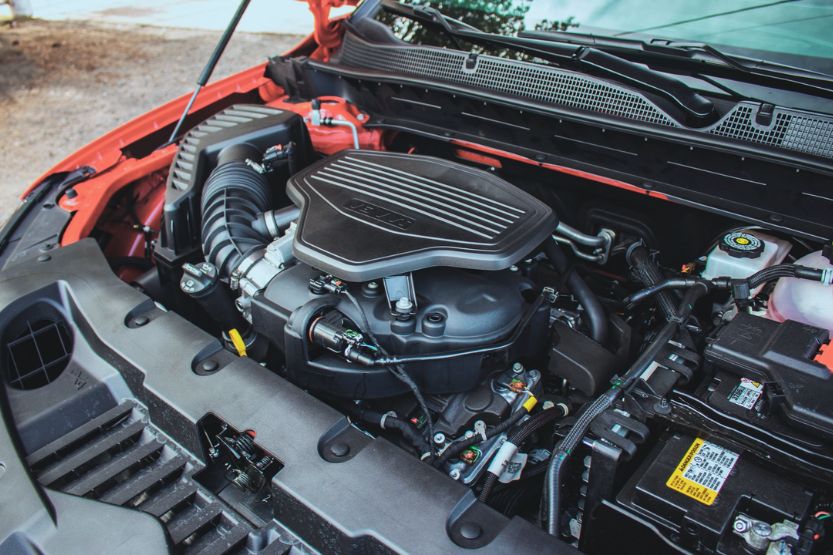
If you have reached this far reading this article, perhaps it has sparked some questions you want to be answered in your mind. Just keep on reading, and you may get your answers from the ones listed below:
What Is the Chevy Wiring Color Code?
The wiring color code of Chevy is recognized by most companies in the automobile electrical wiring industry. However, this wiring color code is not fully complete because Chevy is still changing some of the color codes from time to time.
What’s the Importance of This Chevy Wiring Color Code?
If not for this code, car electricians would be hard put in fixing car electrical problems. This wiring color code is specifically designed so that car electricians can distinguish the wires that go into or are connected to specific electrical devices in a vehicle.
The wiring color code distinguishes between the neutral, the hot, and the ground wires. The purpose of this code is to give car electricians an essential guide on how they can wire or fix the wiring problems of a vehicle.
What Is the Standard Color Code Used to Differentiate Electric Wires?
The U.S. electrical wiring color code has the following designations:
- Phase 1 – Black
- Phase 2 – Red
- Phase 3 – Blue
- Neutral – White
- Ground – Green, Green with Yellow Stripe, or Bare Wire
What Wire Color Goes to the Ignition Switch?
The first wire that you need to connect to the ignition switch is the positive wire. It should be the wire that connects the battery to the ignition switch. The standard in the industry is to use a thick red wire as the positive wire.
So, if you find a thick red cable, that’s the wire you must connect to the battery’s positive terminal. Then route a wire from this terminal to the positive terminal of the ignition switch.
How Can You Locate a Short in a Car?
To find out where the shorted section of an electric circuit in your car is located, do the following:
- Get a diagram of your car’s electrical circuits. Your car’s EWD or electrical wiring diagram is a color-coded chart that will help you navigate its electrical system. You also need a multi-tester and a cutting tool to open your car’s wire harness.
- Open the fuse box and check the fuses one by one.
- Use the multimeter to check the continuity of each wiring connection.
- Visually examine the condition of every wire.
- If you still can’t find the short, ask the help of a professional car electrician. They have the knowledge, tools, and experience to fix your shorted wire.
What Will Happen If the Car Starter Is Wired Incorrectly?
The engine’s performance will be drastically affected if you get the negative and the positive wires backward. The starter electric motor can run reverse in circuits other than electric car circuits.
However, diesel and gasoline engines cannot run backward. So, the starter motor will still operate, but the engine, whether gas or diesel, will not start. Instead, it will suck in the fuel-air mixture from the exhaust port, which does not contain any fuel.
It will compress the air, spark the compressed air and then push it out to the fuel intake port. This may lead to problems with the fuel system. In automobiles, it is tough to misconnect the starter wires.
Since manufacturers made them so that you can connect the positive wire to the positive terminal of the starter motor. But this cannot prevent a malicious person from reversing the connection.
In Closing: Wiring Color Code for Chevy
The majority of electrical wiring companies recognize the Chevy wiring color code. However, this wiring code is not yet complete since Chevy keeps changing things here and there.
It also uses specific codes for car components such as air conditioning or power windows. The Chevy wiring code is generally used as an essential guide in wiring cars.
Color coding electrical wires are vital because they specify the purpose or function of each wire in a particular electrical circuit. Generally, the varying colors of electrical wires distinguish between the neutral, the hot, and the ground wires.


